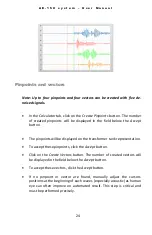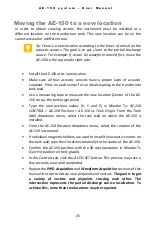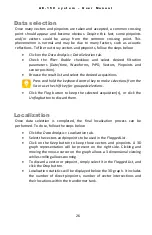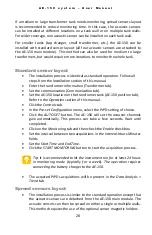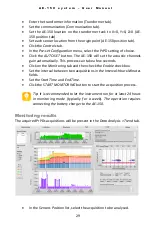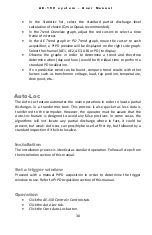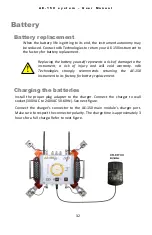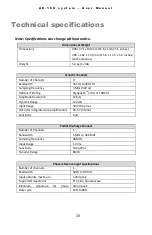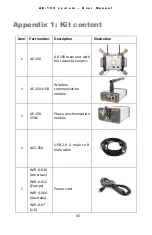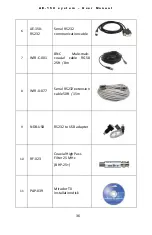
A E - 1 5 0 s y s t e m – U s e r M a n u a l
26
Data selection
Once many vectors and pinpoints are taken and accepted, a common crossing
point should appear and become obvious. Despite this fact, some pinpoints
and/or vectors could be away from the common crossing point. This
phenomenon is normal and may be due to many factors, such as acoustic
reflections. To filter out stray vectors and pinpoints, follow the steps below:
Click on the
Data Analysis > Data Selection
tab.
Check the
Filter Enable
checkbox and select desired filtration
parameters (Date/time, Waveforms, PrPD, Vectors, Pinpoints and
sensor position).
Browse the result list and select the desired acquisitions.
Press and hold the keyboard control key to make selections from the
list or use the shift key for grouped selections.
Click the
Flag
button to keep the selected acquisition(s), or click the
Unflag
button to discard them.
Localization
Once data selection is completed, the final localization process can be
performed. To do so, follow the steps below:
Click the
Data Analysis > Localization
tab.
Select the vectors and pinpoints to be used in the
Flagged List
.
Click on the
Keep
button to keep those vectors and pinpoints. A 3D
graph representation will be present on the right side. Clicking and
moving the mouse cursor on the graph allows a 3 dimensional viewing
while scrolling allows zooming.
To discard a vector or pinpoint, simply select it in the
Flagged List
, and
click the
Drop
button.
Localization statistics will be displayed below the 3D graph. It includes
the number of direct pinpoints, number of vector intersections and
their locations within the transformer tank.













